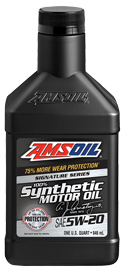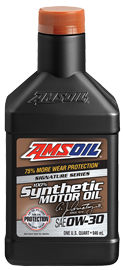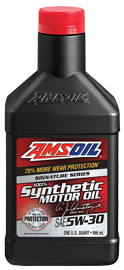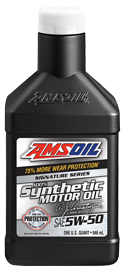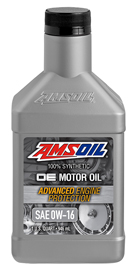As motor oil viscosity continues to decrease, base oil and additive quality become more important.
Despite uncertainty surrounding future CAFE standards, fuel economy remains the biggest driver of innovation in the auto industry. One strategy for increasing fuel economy involves reducing energy lost to friction. Using lower-viscosity lubricants, which reduce pumping losses and flow easier at startup, helps automakers accomplish this goal. Just as we've become accustomed to CW-20 oils, OW-16 oil has entered the market and is recommended for the 2018 Toyota* Camry* and Honda* Fit*. People are wondering hew much lower viscosity can go.
That’s because excessively low lubricant viscosity can reduce wear protection. Some people fear the fuel economy gains of modem low-viscosity oils aren’t worth the potential loss of wear protection. You should be familiar with the relationship between lubricant viscosity and wear protection, but it bears repeating.
Motor oil must develop a durable fluid film that separates engine components so they don’t rub together and wear out. As a rule of thumb, the higher the oil’s viscosity, the thicker the fluid film - and the better the wear protection.
That being the case, you might think it advantageous to throw out your 0W-20 motor oil and use 15W-50 instead. That’s a bad idea, and here’s why.
Modern engines are built with tighter clearances between parts than their predecessors. Let’s take the GM* 3.8L engines we test in our mechanical lab as an example. The clearances between the crankshaft journals and main bearings can be as low as .0007 inches. That’s thinner than a sheet of paper (about .004 inches).
During operation, oil continuously flows through tiny ports in the crankshaft journals to lubricate the journal/ bearing interfaces. It should form a strong, consistent oil film on which the crankshaft journals float as they spin, preventing them from touching the bearings. This is called hydrodynamic lubrication. Oil that’s too thick for the engine, however, may not flow fast enough to fill the clearances, allowing the high spots on metal surfaces to contact. This is called boundary lubrication.
In this case, using a higher viscosity oil than what’s recommended in your modern engine would lead to increased wear. Adding insult to injury, it would reduce fuel economy and increase operating temperatures as well.
Viscosity that’s too low, however, can have the opposite effect. Since viscosity is related to film thickness, low-viscosity oil may not develop an adequate fluid film to keep metal components separated, leading to wear. If bad enough, parts will eventually weld together and destroy the engine.
You can see how modern engines have put oil formulators into a bind. How do we formulate low-viscosity oils that maximize fuel economy while also providing good wear protection in today’s stressful engines?
In a word, quality.
Although oil film thickness is related to lubricant viscosity, film strength is a function of base oil and additive quality. We start with high-quality synthetic base oils that offer naturally high resistance to heat and chemical breakdown.
The challenge, however, is that lower-viscosity oils tend to be more volatile, meaning they burn off more easily when exposed to high heat. If you ever look at a motor oil’s NOACK Volatility, you’ll notice volatility tends to increase as the oil viscosity decreases. This is of particular importance since most new vehicles are equipped with turbocharged engines, which generate increased heat. High volatility can lead to excessive oil consumption, which causes the oil to thicken, making it harder to pump through the engine and reducing fuel economy. Oil that has thickened can also lead to deposits and disrupt the additive balance.
That’s why only synthetic base oils can be used to formulate a OW-16 motor oil. Conventional base oils are too volatile to meet requirements of low-viscosity oil.
Additives, too, play a vital role in low-viscosity oils. We talked about boundary lubrication earlier. When in a boundary lubrication situation, protecting against metal-to-metal contact falls on the motor oil’s anti-wear additives, more so than with higher viscosity oils. The additives form a sacrificial barrier on metal parts that absorbs contact and protects the metal surfaces.
Motor oil quality has always been important, but modem low-viscosity oils underscore the point. That’s good news for Dealers selling the best oil on the market.

